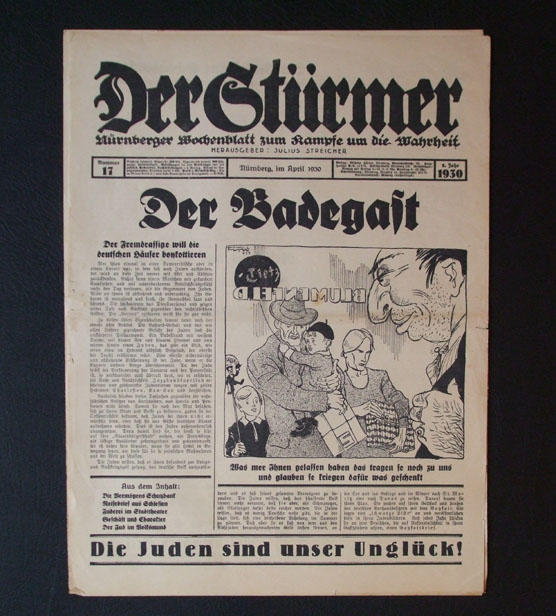What were the choices of non-Jewish people?
On the night of 9 November 1938, after an inflammatory speech by Goebbels, Nazi leaders ordered SA, SS and various other National Socialist German Worker’s Party organisations to destroy synagogues and demolish Jewish shops.
Vague orders and escalating violence
Police and Firefighters were told to hold back from the destruction ensuing, but to protect non-Jewish property from damage. Typically, orders were made deliberately vague. Nazis made their instructions open to interpretation to avoid direct responsibility. This left considerable room for individual choices concerning violence against people and property.
Perpetrators
SA and SS mostly in civilian clothes, but also a significant minority of the general public – some of them party members – joined in the violence. Together they looted and destroyed synagogues, shops and apartments.
Quickly, the sweeping violence turned into brutal attacks on Jewish people.
Ruth David describes how invaders chose of their own volition to brutally attack a disabled Jewish man in his wheel chair. Her testimony gives a face to the many victims of violence who can sometimes be overlooked given the emphasis on the damage to synagogues and shops in Nazi propaganda which influences our perception till today.
© National Holocaust Centre and Museum
Children and adolescents followed the example of adults. In particular, Hitler Youth teenage boys vandalised Jewish shops and were involved in severe beatings.
Bernard Grunberg speaks about the Nazi thugs who destroyed the workshop of his training college in the Summer of 1938. They did this in the run up to the November Pogrom. When listening to Bernard’s testimony, notice how difficult it is for him as the victim to identify the perpetrators given the traumatic circumstances.
© National Holocaust Centre and Museum
Bystanders?
Many non-Jewish members of the general public just “stood by” while this violence was happening. They neither attempted to hinder the violence nor left the scene to express their protest.
What is a “By-stander”? This concept has been increasingly under scrutiny. How does Ruth David question the possibility of being an “innocent by-stander”? What impact can passive onlookers have on the development of a crime?
© National Holocaust Centre and Museum
Brave up-standers
Up-standers existed, but they were exceptionally rare. Few stepped in to help the victims or stop the terror and destruction.
Ruth David remembers an unknown helper who protected her. She was hiding in a car with her sister while a Nazi mob stormed her family home and smashed everything with axes. What might have been this up-stander’s motivation to take such a risky step?
© National Holocaust Centre and Museum
Acceptance of anti-Jewish policies
Although many objected to the violence, the Anti-Jewish policies were accepted in general. Two core aspects prevailed in the mix of motivations:
- Many non-Jewish people agreed with one of the central accusation of Nazi ideology. They perceived that Jewish people had indeed accumulated undeserved wealth at the expense of the “Aryan People’s community”.

An “honest German family” is spending their last hard-earned money in the Jewish owned department store “Tietz” – is the stereotypical antisemitic message of this Propaganda drawing. To drive Jewish people out of the economy in order to achieve a fairer economic system and ultimately the common good was a central theme in Nazi ideology.
© National Holocaust Centre and Museum
2. A long tradition of antisemitism contributed to the general approval for the Anti-Jewish measures of the Regime.
What role does preexisting antisemitism play for the willingness of Austrians to support Nazi units during the Pogrom? Was antisemitism constant over the the centuries? How strong must antisemitism in 1930s Austria have been to give Harry Bibring the impression that 90% of the population supported the violent attacks?
© National Holocaust Centre and Museum